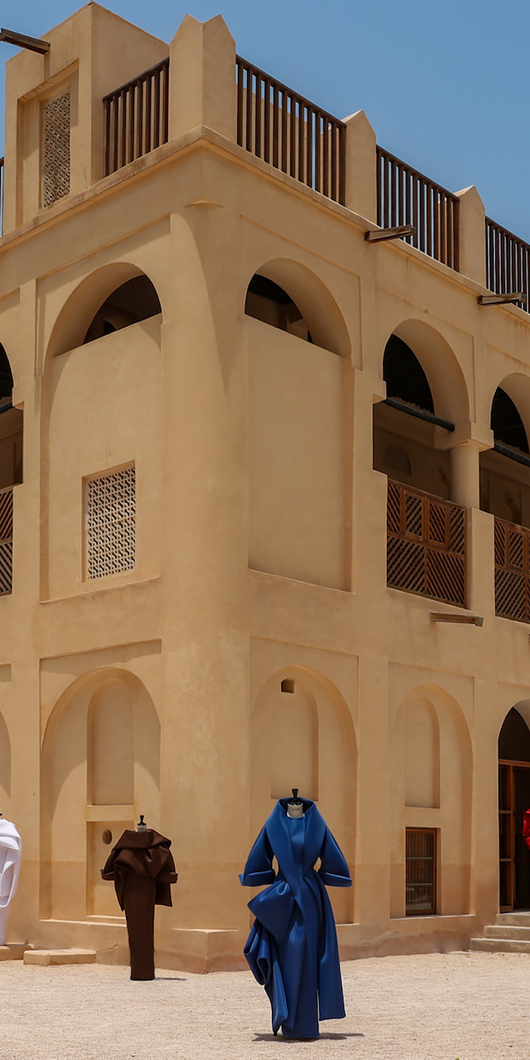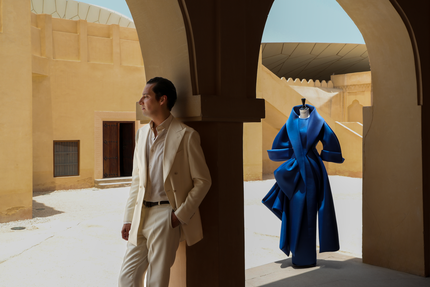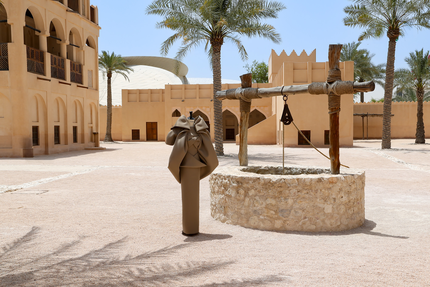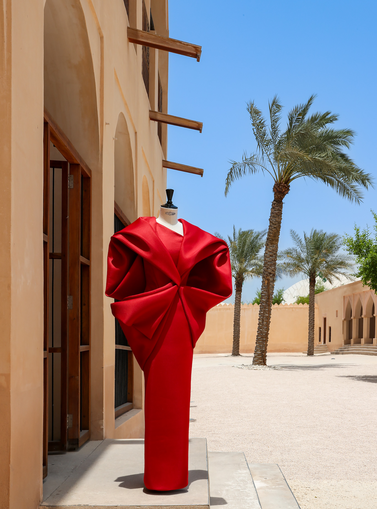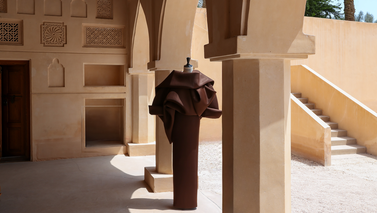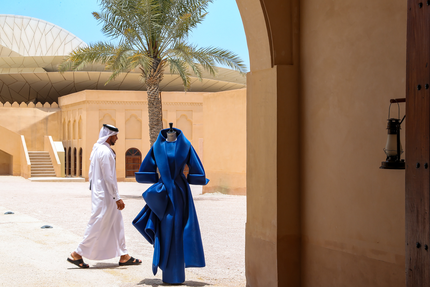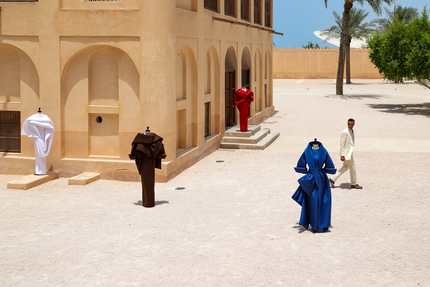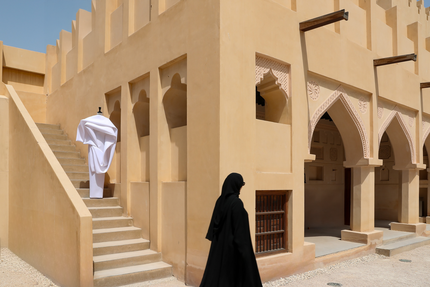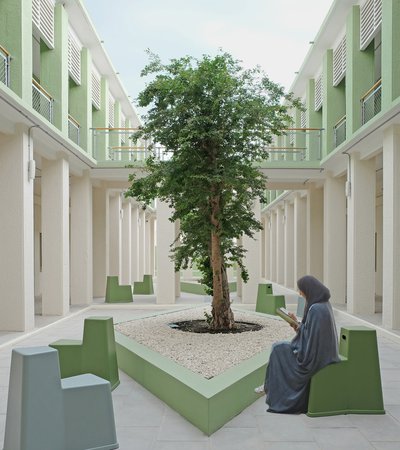Entering Mohamed Benchellal’s studio at Liwan, Umm Kulthum’s Alf Leila wa Leila fills the space and the melody moves slowly through the former girls’ school classroom- turned- atelier. It was not background noise but an integral part of his creative process.
Benchellal believes music enriches the creative process and here it is constant.
The space itself tells a story of intentional simplicity: fabric, a mannequin, scissors, thread and natural light. Where other designers might surround themselves with inspiration boards, Benchellal works with focused precision.
He never sketches. "What I do is I take pieces of fabric and I drape," he explains, pointing to a partially shaped form on the mannequin. "This is my sketch."
